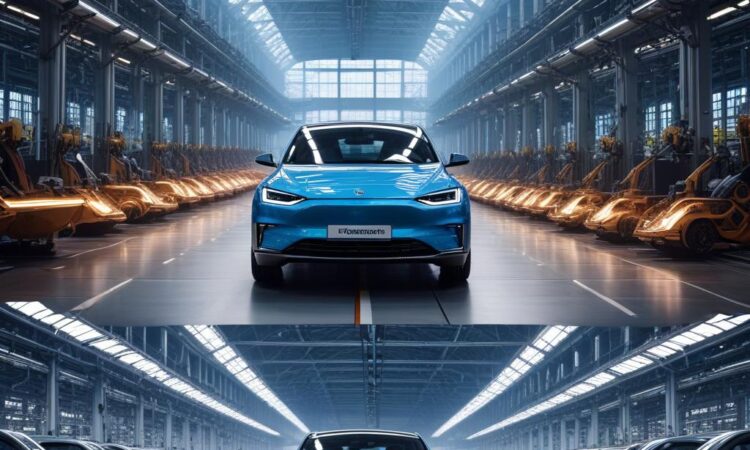Germany’s Once-Mighty Car Industry: Crisis and the Road to Recovery
Germany. Land of beer, bratwurst, and… well, until recently, incredibly dominant car manufacturing. Think Mercedes, BMW, Volkswagen – names that practically *defined* automotive excellence. But lately, things have gotten a bit… bumpy. The German car industry, a cornerstone of the national economy, is facing a serious crisis, and with national elections just around the corner, the pressure is ON.
The Perfect Storm
It’s not just one thing; it’s a perfect storm of challenges. First up, the global chip shortage – remember those empty car lots? That’s a big part of it. Production lines ground to a halt, and even when things got moving again, it was slow going. Then there’s the transition to electric vehicles (EVs). While Germany is trying to catch up, they’re facing stiff competition from countries further along in the EV game. China, for example, is already a major player, and Tesla’s influence is undeniable. Germany’s established automakers are having to play catch-up, a massive undertaking requiring significant investment and potentially painful restructuring.
And let’s not forget the impact of the war in Ukraine. Disruptions to supply chains, soaring energy prices, and general economic uncertainty are all adding to the headaches. It’s a complicated situation, and frankly, it’s stressful for everyone involved – from the factory workers to the CEOs, and ultimately, the German taxpayer.
The Election Factor
This crisis is hitting at a particularly sensitive time: German elections. The economy is always a major issue in any election, and the struggling auto industry is a massive chunk of that economy. Political parties are scrambling to come up with solutions, promising everything from subsidies to retraining programs. But talk is cheap. What concrete steps can actually make a difference?
Possible Solutions – A Tough Road Ahead
The path to recovery isn’t going to be easy. It’s going to require a multi-pronged approach. Investing heavily in electric vehicle technology is crucial. This means not just building more EVs, but also developing the charging infrastructure needed to support them. Germany needs to encourage innovation and attract the talent necessary to compete in the global EV market. That means investing in research and development, but also creating an environment that attracts and retains skilled engineers and technicians.
Beyond EVs, though, there’s the broader issue of supply chain resilience. Germany needs to diversify its sourcing of raw materials and components to avoid being so vulnerable to global shocks. This might involve forging stronger partnerships with other European nations or exploring new suppliers. It’s all about reducing reliance on single sources and strengthening the overall supply chain robustness.
And, of course, there’s the human element. The transition to EVs will require retraining and upskilling the workforce. Many workers in traditional combustion engine manufacturing may need new skills to find employment in the EV sector. Governments and industry need to work together to ensure a smooth and supportive transition for these workers, preventing job losses and social unrest.
A Long Road to Recovery
So, what’s the prognosis? It’s not going to be a quick fix. The German car industry is facing significant challenges, and the path to recovery is a long and winding one. The success will depend on a combination of factors: government policy, industry innovation, and the adaptability of the workforce. The upcoming elections will undoubtedly play a key role in shaping the direction the industry takes. It’s a critical moment, not just for the German car industry, but for the German economy as a whole. The next few years will be crucial in determining whether Germany can reclaim its position as a global automotive leader in this rapidly changing landscape.
The stakes are high. The future of a significant portion of the German economy hangs in the balance. And the world is watching to see if the country can navigate this crisis and emerge stronger on the other side.

